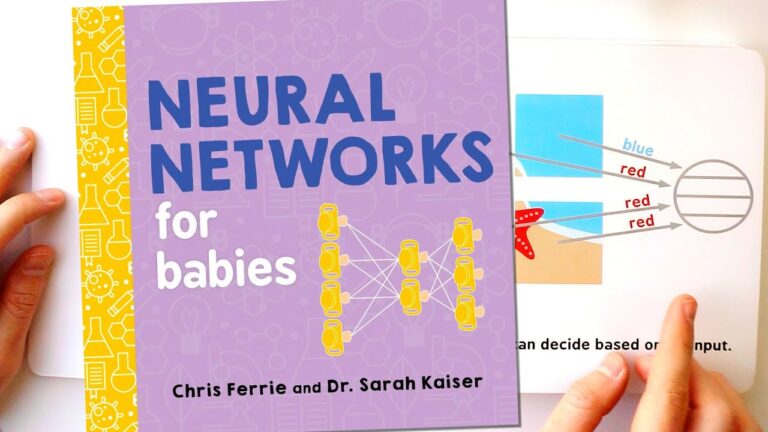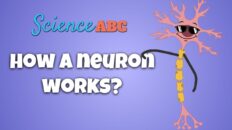What are Artificial Neural Networks (ANNs) ?
Artificial Neural Networks (ANNs) are a fundamental class of machine learning algorithms inspired by the structure and function of the human brain. They have proven to be highly versatile and effective in solving complex problems across various domains. ANNs consist of interconnected nodes that process and transform data, allowing them to learn and make predictions. Artificial Neural Networks (ANNs) are intelligent computer programs that mimic our own brain’s problem-solving abilities. They’re like digital detectives, learning from real-life examples to tackle complex problems in various fields such as medicine, finance, and even creative Endeavors like art.
Human Brain Vs ANN – Neurons Vs Nodes
Imagine our brains are amazing problem solvers. They have billions of tiny cells called Neurons that work together to figure things out. ANNs are kind of like a computer’s version of these Neurons. They’re made up of these little parts called nodes that work together to solve problems. These networks are like puzzle solvers. Just like we put puzzle pieces together to make a picture, ANNs put pieces of information together to make answers.
They learn from lots of examples, just like we learn from lots of experiences. This helps them become really good at predicting things, like guessing what’s in a picture or figuring out trends in data .ANNs are akin to a computer’s version of these Neurons. Imagine them as a bunch of small, interconnected puzzle pieces, known as nodes, working together just like a team of detectives working together to crack a case.
Neurons Vs Nodes For a Layman
Now, let’s dive deeper into their inner workings. ANNs come in different types, just like tools specialized for specific tasks. Picture a toolkit containing distinct instruments – one for images, another for text, and so forth. Each type possesses its own unique approach to solving problems, tailored to the particular task at hand.
Consider our brains as powerful problem-solving engines. They’re composed of billions of microscopic units called neurons, working harmoniously to crack various enigmas. Now, ANNs serve as the computer’s version of these neurons (In ANNs, these specialized components are known as nodes), where each neuron-like unit is known as a “node.” These nodes collaborate just like a team of detectives, pooling their insights to solve intricate problems that stump humans.
Think of nodes as messengers passing information around, much like telling a friend something, and that friend passing it on to another, creating a chain. These nodes work collaboratively to process and transform the incoming information into something meaningful and useful. This dynamic collaboration among nodes transforms raw data into meaningful insights, just like how each friend adds their perspective to a story.
Components of ANNs – Nodes, Connections, and Weights: A Layman’s View
Picture an ANN as a group of friends solving a puzzle together. Each friend is like a tiny computer that processes information. Nodes are these friends. They take a piece of the puzzle and think about it. Nodes are like tiny computers that process information, like friends working together to solve a puzzle. Connections and weights are like the clues they use to solve the puzzle.
But friends don’t solve a puzzle alone. They talk to each other, sharing clues to complete the puzzle. This talking is the connection between nodes. And just like one friend might be better at solving certain parts of the puzzle, each connection has a weight – a number that shows how important that clue is.
Autonomous Learning
What’s truly fascinating is that ANNs have the ability to learn autonomously. If they make a mistake, they don’t need a teacher scolding them; they learn from the error and improve over time. It’s similar to practicing a sport – each attempt hones their skills and enhances their performance. In other words, when ANNs make an incorrect prediction, they Analyze their error and refine their approach for the next round. It’s akin to an athlete getting better with every practice session, eventually mastering their craft.
Activation Functions
Just as we consider different factors when making decisions, ANNs have their own decision-making process facilitated by “activation functions.” These functions help ANNs determine what to do with the information they receive. It’s like deciding whether to wear a jacket based on the temperature outside – a simple yet effective way to guide their actions.
Picture ANNs as superheroes of problem-solving. They study numerous examples, uncover hidden patterns, and apply these patterns to predict outcomes. In essence, they’re like the intelligent cousins of our brains, helping us unravel complex challenges in the world. Much like how a skilled detective pieces together clues to solve a case, ANNs piece together data to unlock insights and provide solutions.
In technical terms, they scrutinize vast amounts of examples, decode intricate patterns, and leverage these patterns to make predictions. Think of them as the brain’s ingenious relatives, assisting us in unraveling complex global challenges, decode data patterns to unearth insights and provide innovative solutions. They learn from countless examples, mimicking our human ability to learn from a multitude of experiences. This learning process equips them with exceptional predictive prowess, enabling tasks like identifying objects within images or deciphering complex patterns in vast datasets.
Activation Functions
Imagine you’re deciding whether to go outside based on the weather. If it’s too hot, you might stay in. If it’s just right, you’ll go out. The activation function is like this decision-making process. The activation function is like deciding whether to go outside based on the weather. It helps the network decide if a signal should pass from one node to another.
Each node has an activation function that looks at the signal coming from the previous node. If the signal is strong enough (just like if the weather is good enough), the node activates, and it sends a signal to the next layer. If not, it stays quiet.
Basic Structure of ANNs
An ANN is composed of layers of nodes, often organized into three main types:
- Input Layer: Receives raw data or features from the dataset.
- Hidden Layers: Intermediate layers that transform the input data through weighted connections.
- Output Layer: Produces the final prediction or classification.
Input Layer
Think of an Artificial Neural Network (ANN) as a mathematical model that can learn from examples, just like how we learn from experiences. The input layer is like the doorway through which we give information to the network. Imagine you’re teaching a computer to recognize animals based on pictures. The input layer is where you show the computer these pictures. Imagine you’re teaching a computer to recognize animals based on pictures. The input layer is where you show the computer these pictures. Just like our eyes see the world and our brain processes what we see, the input layer receives data. Each node (a small computing unit) in the input layer represents a piece of information. If you’re showing the network pictures of animals, each node might represent a pixel’s color in those pictures.
Hidden Layers
Imagine you’re trying to figure out what makes an animal unique. You might look at its size, color, and other features. Hidden layers work a bit like your thinking process. They analyze the information from the input layer and try to find patterns that make an animal recognizable. Hidden layers work a bit like your thinking process. They analyze the information from the input layer and try to find patterns that make an animal recognizable.
These layers are like hidden rooms where calculations happen. Each node in a hidden layer takes the data from the input layer, multiplies it by a number (this is the weight), and decides whether it’s important. If the data matches a pattern the network is looking for, the node might “activate” and send a signal to the next layer.
Output Layer
When you’ve figured out what makes an animal unique, you’re ready to say what animal it is. The output layer does something similar. It takes the patterns that the hidden layers found and gives you a final answer. The output layer takes the patterns that the hidden layers found and gives you a final answer.
If you were teaching the network to recognize animals, each node in the output layer might represent a different animal – like dogs, cats, or birds. The node that “lights up” the most (activates the strongest) tells you what the network thinks the picture shows.
Working Principles of ANNs – Feedforward Propagation
Think of feedforward propagation like passing a ball in a game. You throw the ball, your teammate catches it, and then throws it to another teammate. In an ANN, the input layer throws the data “ball” to the hidden layers, and they pass it to the output layer. Feedforward propagation is like passing a ball in a game. Data moves from one layer to the next, getting transformed along the way. Each layer does something with the data, like looking for patterns or making calculations. By the time the data reaches the output layer, it’s transformed into an answer.
Loss Function
Imagine you’re trying to hit a target with darts. The closer your darts are to the center, the better you’re doing. The loss function is like a scoreboard that tells you how well you’re hitting the target. The loss function is like a scoreboard that tells you how well your predictions match the real answers. It helps the network learn from its mistakes. In an ANN, the loss function compares the network’s answers to the real answers. If the network is way off, the loss is high. If it’s close, the loss is low. The network tries to play better by adjusting its “throws” (weights) to improve its score.
Backpropagation
Imagine you’re learning to dance. At first, you make some moves wrong. But then a dance teacher shows you where you went off track. Backpropagation is like this learning process. Backpropagation is like a dance teacher telling you where you made mistakes so you can improve your dance moves. It helps the network adjust its weights to make better predictions. After the network makes a prediction, backpropagation checks where it was wrong. It figures out how much each weight contributed to the mistake and adjusts them. It’s like the network is learning from its dance steps and getting better each time.
In a nutshell, an Artificial Neural Network is a mathematical model inspired by the human brain that learns from examples to make predictions. The input layer brings in data, hidden layers find patterns, the output layer gives answers, nodes process data, connections and weights guide the process, activation functions make decisions, feedforward propagation moves data, the loss function measures accuracy, and backpropagation helps the network learn and improve. It’s like a team of friends solving puzzles and learning to dance – all with the goal of making accurate predictions.

